Dali Ancient Town is located in Dali City, Dali Bai Autonomous Prefecture, Yunnan Province. It borders Erhai Lake to the east and is backed by Cangshan Mountain to the west, covering an area of 3 square kilometers. As a national 4A-level tourist attraction, the ancient town retains the checkerboard-like grid layout from the Ming and Qing dynasties, known as the "Nine Streets and Eighteen Lanes". The north and south city gates face each other, while the east and west gates are staggered. The town is approximately 1,000 meters wide from east to west and 2,000 meters long from north to south. There are four city gates on the city wall: the East Gate (Erhai Gate, also known as Tonghai Gate), the South Gate (Chengen Gate), the West Gate (Cangshan Gate), and the North Gate (Anyuan Gate). A moat surrounds the town.
History and Culture
The history of Dali Ancient Town can be traced back to the Warring States Period (4th century BC), when it was part of the territory of the Dian King. In the 14th year of the Dali era of the Tang Dynasty (779 AD), Yimouxun, the king of Nanzhao, moved the capital from Taihe City to this location and built the Nanzhao royal capital modeled after the layout of Chang'an City. In 937 AD, Duan Siping defeated the Dainining Kingdom and established the Dali Kingdom centered in Dali. In the 15th year of the Hongwu era of the Ming Dynasty (1382 AD), after the Ming army captured Dali, they built the existing Dali Ancient Town on the foundation of Yangjumie City and expanded the city eastward. In 1982, Dali Ancient Town was designated as one of China's first batch of 24 national historical and cultural cities.
Dali Ancient Town is one of the core birthplaces of Bai ethnic culture. Local residents still preserve many traditional living customs and cultural activities. For example, the "March Street" (held on the 15th day of the third lunar month every year) is a large-scale folk festival integrating trade, culture, and religion. With a history of over a thousand years, it is known as the "Largest Ethnic Festival in Asia". In addition, intangible cultural heritages of the Bai people, such as tie-dye craftsmanship, the Three-Course Tea ritual, and the "Raosanling" (a traditional folk activity), have been passed down here to this day.
Major Attractions
South Gate (Chengen Gate)
As the main gate of Dali Ancient Town, it was first built in the 15th year of the Hongwu era of the Ming Dynasty (1382 AD), and the existing gate was reconstructed in 1982. The gate is 12 meters high and 9.8 meters wide. The gate tower adopts the gable and hip roof architectural style, with high-raised eaves corners, presenting a magnificent momentum. The two characters "Dali" on the gate were written by Guo Moruo, making it a iconic check-in spot of the ancient town.
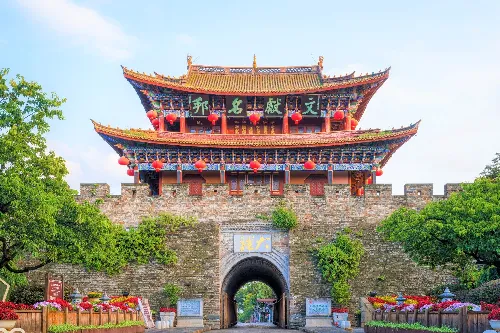

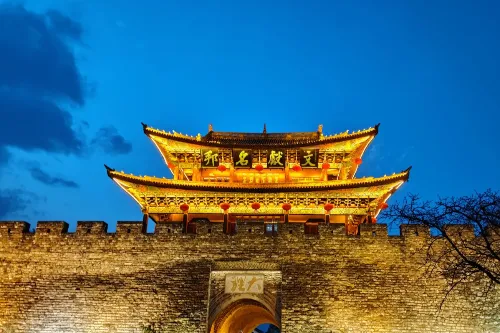
Foreigners' Street (Huguo Road)
This characteristic street is 1,200 meters long and got its name because it was a gathering place for foreign tourists in the early years. It retains the traditional Bai-style residential architecture of "Three Sections and One Screen Wall". Paved with bluestones, the street is lined with cafes, handicraft shops, and Western restaurants. As a popular spot to experience the integration of Chinese and Western cultures, it was once rated as one of the "Ten Most Charming Streets in China" by Chinese National Geography.
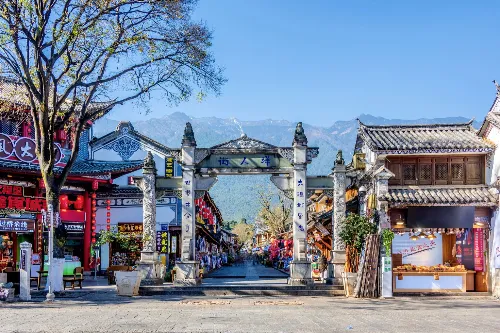
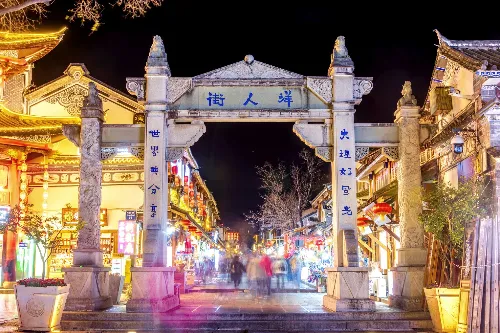

Wuhua Building
As the highest point of the ancient town, it was first built in the Tang Dynasty and served as a place for the Nanzhao kings to entertain distinguished guests. The existing building was reconstructed in 1998, with a height of 21.5 meters and a total of five floors. Visitors can climb the building to overlook the panoramic view of the ancient town and the scenery of Cangshan Mountain and Erhai Lake. Inside the building, there are exhibitions of historical steles, calligraphy, and paintings from various dynasties in Dali, making it an important window to understand Dali's history and culture.
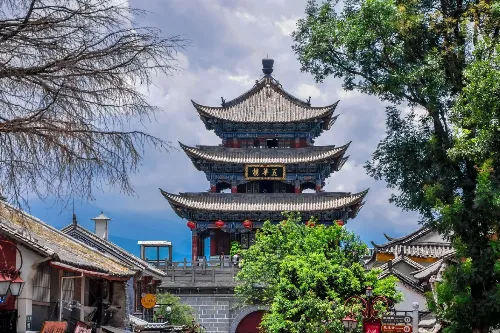
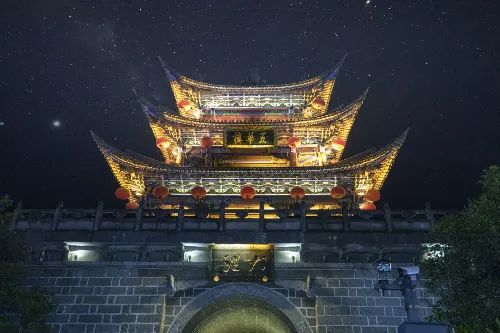
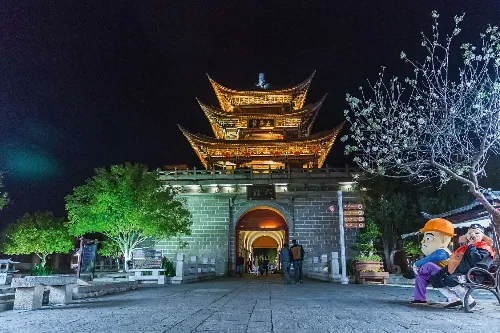
Dali City Museum
Located inside the South Gate of the ancient town, it was originally the site of the Yunnan Provincial Military Governor's Mansion, covering an area of 15 mu (1 mu ≈ 0.0667 hectares). The museum houses nearly 5,000 cultural relics, including cremation jars from the Nanzhao Kingdom period, Acarya Avalokitesvara statues from the Dali Kingdom period, and Bai ethnic costumes from the Ming and Qing dynasties. Among them, the fragments of the "Nanzhao Dehua Stele" are important physical materials for studying the history of the Nanzhao Kingdom.
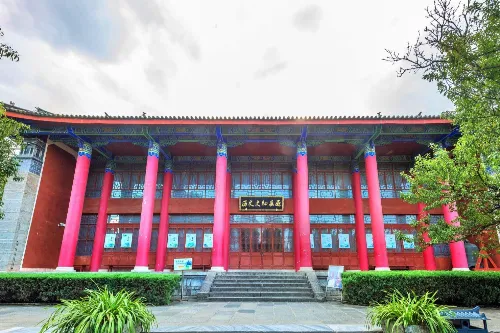
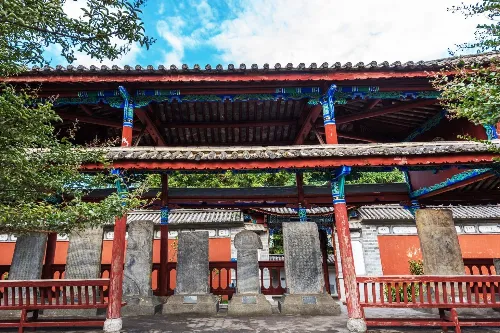

Tour Routes
Classic One-Day Tour Route:
1. South Gate (photo check-in) → Dali City Museum (learn about history) → Fuxing Road (visit handicraft shops) → Wuhua Building (climb for scenery) → Foreigners' Street (lunch + coffee break) → Yu'er Garden (relax in the garden) → North Gate (watch the sunset glow)
Cultural Experience Route:
2. West Gate (Cangshan Gate) → March Street Ruins (fairs held on the 5th, 14th, and 23rd days of each lunar month) → Dali Intangible Cultural Heritage Museum (free admission, open 9:00-16:30) → Zhoucheng Village (25 kilometers from the ancient town, experience Bai tie-dye; round-trip chartered car costs about 150 yuan)
Night View Route:
3. Renmin Road (visit night market stalls) → Dabing's Hut (folk music performances start at 20:00) → Honglongjing (light and water scenery) → South Gate City Wall (open until 21:00 at night, overlook the ancient town's lights)
Travel Tips
- Best Season: Spring and autumn (March-May, September-November), with mild temperatures. Avoid the rainy season (June-August) and windy winter days.
- Wear comfortable sports shoes, as the bluestone roads in the ancient town are slippery. Bring a thin jacket, as the temperature difference between day and night is large (about 10℃).
- Visit museums and city gates in the morning to avoid tourist group peaks; experience a slow life on Foreigners' Street or Renmin Road in the afternoon, and visit the night market in the evening.
- When buying handicrafts, it is recommended to compare prices at multiple stores and negotiate properly. Recommended purchases: Bai tie-dye products (average price 50-200 yuan), marble products (about 30-100 yuan).
- If time permits, spend half a day visiting Xizhou Town (18 kilometers from the ancient town, 30 minutes by taxi) to visit the Yan Family Compound and taste authentic Xizhou Baba (a local savory pastry).
Notes
- Some streets in the ancient town are pedestrian-only, with vehicle restrictions. Pay attention to navigation prompts when driving by yourself.
- Respect Bai ethnic customs: take off your shoes when entering temples or local residences, and avoid discussing religious sensitive topics.
- During festivals like March Street, there are large crowds; keep your personal belongings safe and plan your route in advance.
- There are few pharmacies in the ancient town; prepare daily medicines by yourself. The altitude is about 2,000 meters; avoid strenuous exercise to prevent altitude sickness.
- Some homestays are located in small alleys; confirm the specific location when booking. It is recommended to choose accommodation near main streets (such as around Fuxing Road and Foreigners' Street).
Transportation
- By Plane: It takes about 40 minutes to take a taxi from Dali Airport to the ancient town, costing 80-100 yuan. Alternatively, take the airport bus to Dali Railway Station, then transfer to Bus No. 8 to the South Gate of the ancient town (ticket price 3 yuan, total journey 1 hour).
- By Train/High-Speed Rail: From Dali Railway Station, take Bus No. 8 or the Santa Special Line to the South Gate of the ancient town (ticket price 2-3 yuan, journey 30 minutes); a taxi ride costs about 20 yuan and takes 15 minutes.
- By Bus: Multiple bus routes in the urban area (such as Bus No. 4, No. 8, and the Santa Special Line) directly reach various city gates of the ancient town, with ticket prices ranging from 1-3 yuan.
- By Self-Driving: Navigate to "South Gate Parking Lot of Dali Ancient Town". The parking fee for cars is 10-20 yuan per day, and there are multiple parking lots around the ancient town.
- By Cycling: There are bike rental points at the East Gate of the ancient town. Electric bikes cost 50-80 yuan per day, and bicycles cost 20-30 yuan per day, which are suitable for cycling around Erhai Lake or wandering around the ancient town.
Opening Hours
The ancient town is open 24 hours a day;
Opening hours of major attractions:
• Dali City Museum: 9:00-17:00 (closed on Mondays)
• Wuhua Building: 8:30-21:00
• Most shops are open from 9:30-22:30
Tickets
Admission to Dali Ancient Town is free.
Online Booking
Click here to jump to the Trip.com ticketing platform for ticket purchase.


